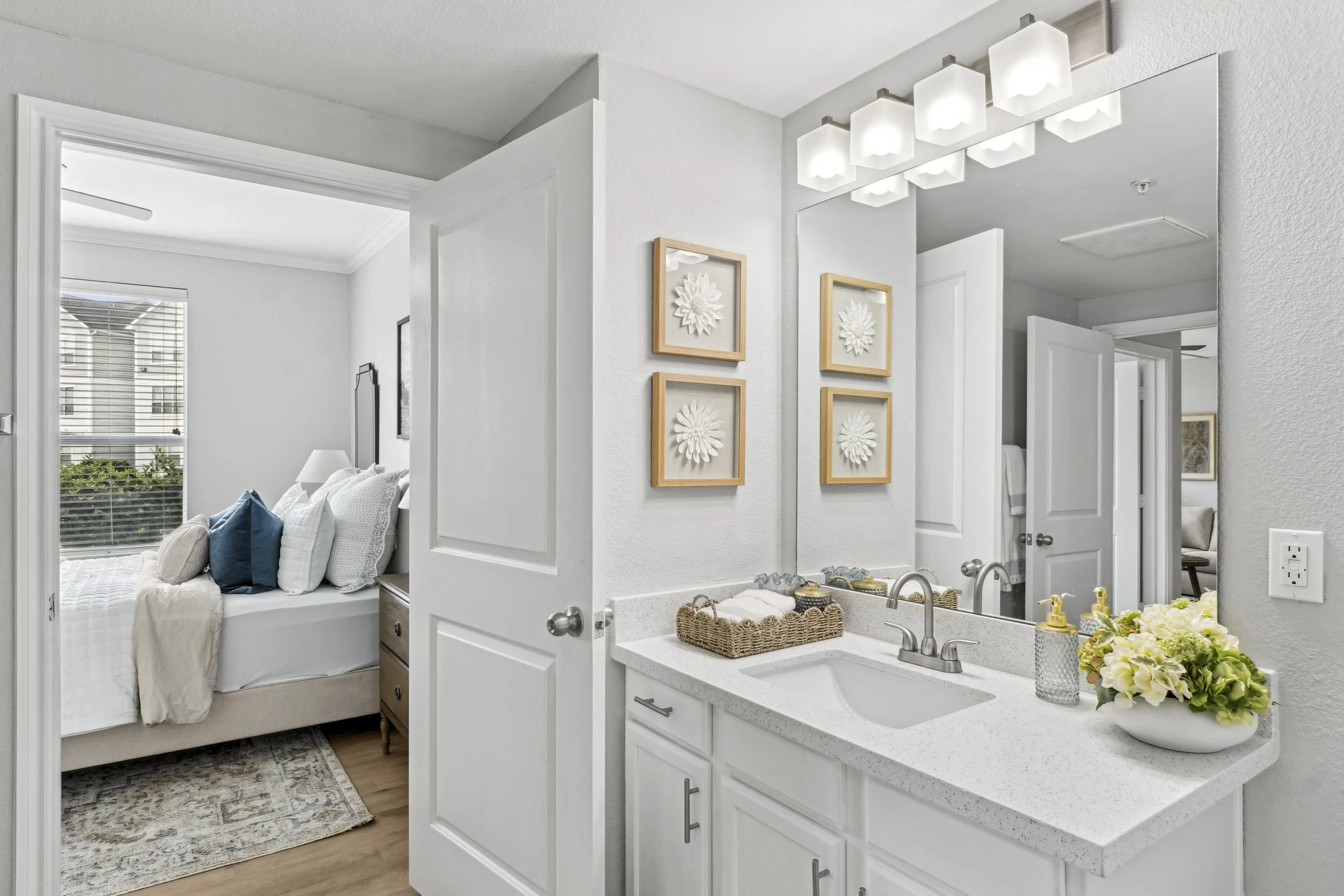Transform Your Space: A Guide to Color Theory for DIY Projects
Color is one of the most influential elements in interior design, playing a crucial role in setting the tone and atmosphere of any space. Whether you're embarking on a DIY home renovation or refreshing the look of a multifamily property, a solid understanding of color theory can help you create a harmonious and visually appealing environment.
The Basics of Color Theory
Primary Colors: Red, blue, and yellow are the core colors from which all others are derived. They are bold and impactful on their own and are essential in creating secondary and tertiary colors.
Secondary Colors: Created by mixing two primary colors, these include green, orange, and purple. These colors offer more variety and are often used in combination with primary colors to create depth and contrast.
Tertiary Colors: These are made by mixing a primary color with a secondary color, resulting in more complex hues like teal (blue-green) or vermilion (red-orange). Tertiary colors are great for adding subtlety and sophistication to your palette.







Choosing the Right Color Scheme
Analogous Colors: These are colors that sit next to each other on the color wheel, such as blue, blue-green, and green. They are often found in nature and create serene and comfortable designs. Use analogous colors to create a peaceful and cohesive space, perfect for areas like bedrooms or reading nooks.
Complementary Colors: Opposite each other on the color wheel, like red and green or blue and orange, complementary colors create vibrant and dynamic contrasts. These combinations are ideal for spaces where you want to make a bold statement, such as a living room or a feature wall.
Triadic Colors: This scheme uses three colors that are evenly spaced around the color wheel, such as red, blue, and yellow. It offers a vibrant and balanced look, often used in playful or artistic spaces. When using triadic colors, it’s important to let one color dominate while the others play a supportive role to avoid overwhelming the space.
Understanding the Psychological Impact of Colors
Colors do more than just decorate a space—they influence our emotions and behaviors. Understanding the psychological effects of different colors can help you design a space that not only looks good but also feels right.
Warm Colors: Reds, oranges, and yellows are considered warm colors. They evoke feelings of warmth and comfort but can also stimulate energy and excitement. Use warm colors in social spaces like kitchens or living rooms to create an inviting atmosphere.
Cool Colors: Blues, greens, and purples fall into the cool color category. They are associated with calmness and relaxation, making them ideal for bedrooms and bathrooms where tranquility is desired. Cool colors can also make a room feel more spacious and open.
Neutral Colors: Neutrals like white, gray, and beige are versatile and timeless. They can serve as a backdrop that allows other colors to stand out or be used to create a minimalist and modern look. Neutrals are also perfect for creating a balanced and cohesive design in any room.
Practical Application of Color Theory in Your Project
When starting a DIY project, the first step is to determine the purpose and mood of the space. Are you looking to create a calm retreat, a lively entertainment area, or a productive workspace? Your color choices should reflect the function of the room.
Test Before Committing: Always test paint samples in the room you're working on, observing how they look under different lighting conditions throughout the day. Colors can appear differently depending on natural light, artificial light, and the size of the room.
Balance and Proportion: When applying color theory, balance is key. Use the 60-30-10 rule: 60% of the room should be a dominant color, 30% a secondary color, and 10% an accent color. This approach helps create a visually appealing and balanced space.
Incorporate Texture and Patterns: Color isn't just about paint—consider textiles, furniture, and decor that can add texture and patterns to your space. These elements can enhance your color scheme and add depth and interest to your design.
Color is a fundamental aspect of design that can transform how a space is perceived and experienced. By mastering the principles of color theory, you can create environments that are not only beautiful but also functional and emotionally resonant. Whether you're updating a single room or designing an entire property, let color be your guide to crafting spaces that inspire and delight.
For more detailed insights on how to apply these principles in your projects, check out the full video here.
